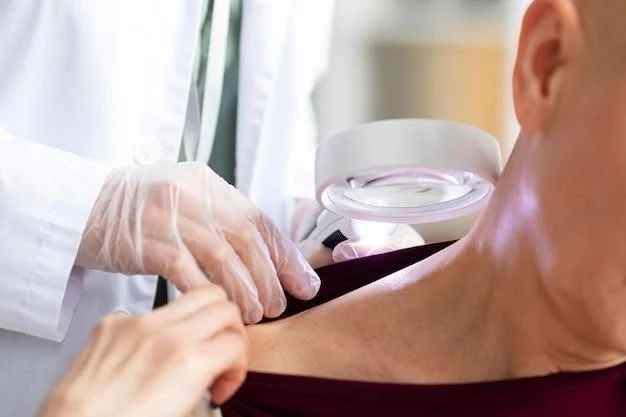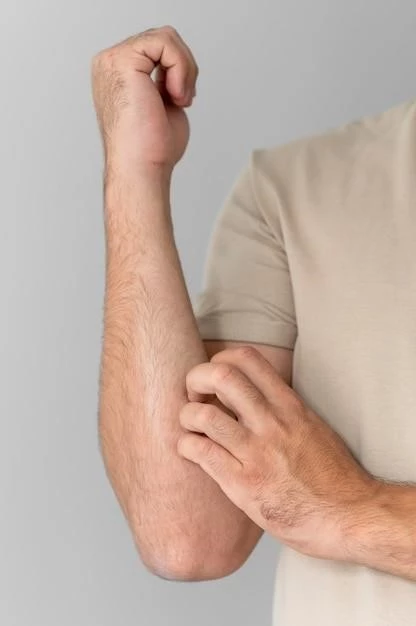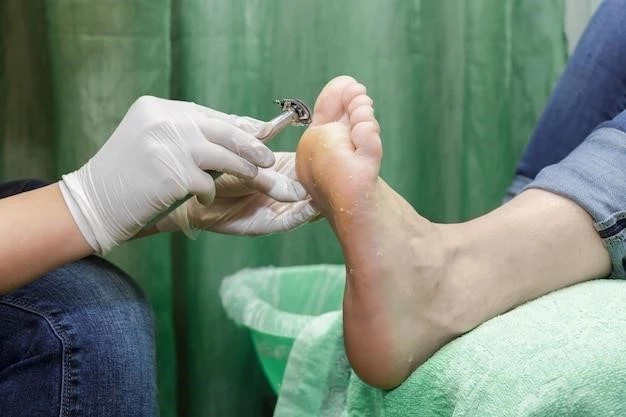Introduction
Thost–Unna palmoplantar keratoderma is a hereditary disorder characterized by thick yellow hyperkeratosis on palms and soles. It was first described by Thost and Unna as Unna-Thost Keratoderma.
Definition and Characteristics
Thost–Unna palmoplantar keratoderma is an autosomal dominant hereditary disorder characterized by diffuse‚ non-transgredient keratoderma on palms and soles. Symptoms include thick‚ yellow hyperkeratosis with red margins. Additional features may include clubbing of nails and knuckle pad-like keratoses. This condition is known to be the most common form of hereditary palmoplantar keratoderma‚ clinically identical to PPK type Vörner characterized by epidermolytic hyperkeratosis.

Historical Background
Unna-Thost Palmoplantar Keratoderma was initially described as an autosomal dominant hereditary disorder by Thost and Unna‚ presenting as thick yellow hyperkeratosis on palms and soles.
Thost–Unna palmoplantar keratoderma‚ also known as Unna-Thost keratoderma‚ was initially characterized by Thost and Unna as an autosomal dominant hereditary disorder. The condition presents with a uniform‚ thick‚ yellow hyperkeratosis over palms and soles‚ representing the most common form of hereditary keratinization disorder affecting these areas. This condition is clinically identical to PPK type Vörner‚ manifesting with epidermolytic hyperkeratosis. Research indicates that PPK type Unna-Thost is inherited in an autosomal dominant fashion and typically develops in early childhood.
Clinical Presentation
Thost–Unna palmoplantar keratoderma presents as a hereditary disorder with diffuse‚ non-transgredient thick yellow hyperkeratosis primarily affecting palms and soles. This condition is characterized by waxy‚ yellow plaques with red margins‚ typically manifesting in early childhood.
Origins of Thost–Unna Palmoplantar Keratoderma
The condition known as Thost–Unna palmoplantar keratoderma was first described as the non-epidermolytic type of hereditary palmoplantar keratoderma‚ characterized by thick yellow hyperkeratosis affecting the palms and soles. Initially named ″Unna-Thost Keratoderma‚″ this disorder is inherited in an autosomal dominant pattern and typically presents with distinct clinical features in affected individuals. Research has shown that this condition shares similarities with other forms of palmoplantar keratoderma‚ such as PPK type Vörner‚ indicating a broader spectrum of hereditary keratinization disorders.
Causes and Genetics
Thost–Unna palmoplantar keratoderma is caused by an autosomal dominant defect in keratin 9‚ leading to diffuse non-transgredient keratoderma over palms and soles. Genetic mutations are responsible for the thick yellow hyperkeratosis characteristic of this hereditary disorder.
Genetic Inheritance Patterns
The genetic underpinnings of Thost–Unna palmoplantar keratoderma involve an autosomal dominant inheritance pattern linked to a defect in keratin 9. This genetic anomaly results in the uniform thickening of the palms and soles‚ characterized by yellow hyperkeratosis with distinct red margins. Research suggests that mutations within the keratin 9 gene play a crucial role in the development of this hereditary condition‚ highlighting the significance of genetic factors in its pathogenesis.
Diagnosis and Differential Diagnosis
Diagnosis of Thost–Unna palmoplantar keratoderma involves identifying the characteristic diffuse non-transgredient thick yellow hyperkeratosis on palms and soles. Differential diagnosis may include other forms of palmoplantar keratoderma‚ considering the autosomal dominant inheritance pattern and specific genetic mutations associated with this condition.
Identification Methods
Thost–Unna palmoplantar keratoderma is typically diagnosed based on the clinical presentation of diffuse‚ non-transgredient thick yellow hyperkeratosis on palms and soles. Additional identification methods may involve genetic testing to confirm the presence of mutations in the keratin 9 gene associated with this hereditary disorder. These diagnostic approaches aim to differentiate Thost–Unna palmoplantar keratoderma from other palmoplantar keratodermas.
Treatment Approaches
The treatment of Thost–Unna palmoplantar keratoderma may involve the use of acitretin to manage the symptoms of thick‚ yellow hyperkeratosis on the palms and soles. Various therapeutic strategies aim to alleviate the condition and improve the quality of life for affected individuals.
Management Strategies
Management of Thost–Unna palmoplantar keratoderma involves a multidisciplinary approach focusing on symptomatic relief and improving quality of life for affected individuals. Therapeutic interventions may include the use of topical agents‚ keratolytics‚ moisturizers‚ and systemic retinoids to address the hyperkeratotic lesions on palms and soles. Additionally‚ genetic counseling and supportive care play crucial roles in managing this hereditary condition. Regular follow-ups and monitoring are essential to track disease progression and adjust treatment strategies accordingly.
Prognosis and Complications
The outlook for Thost–Unna palmoplantar keratoderma varies based on the individual’s response to treatment. Complications may include discomfort‚ pain‚ and impact on daily activities due to the thick yellow hyperkeratosis on palms and soles. Regular management and monitoring can help mitigate potential complications and improve the overall prognosis for affected individuals.
Potential Outcomes
The potential outcomes for individuals with Thost–Unna palmoplantar keratoderma depend on timely diagnosis and effective management strategies. With proper treatment‚ the condition may be alleviated‚ enhancing the quality of life for affected individuals. Regular follow-up care and adherence to treatment regimens play key roles in optimizing outcomes and minimizing the impact of complications associated with this hereditary disorder.
Research and Advancements
Recent research on Thost–Unna palmoplantar keratoderma highlights its autosomal dominant hereditary nature linked to mutations in keratin 9. Constant advancements aim to improve diagnostic accuracy and develop targeted therapies for symptom management.
Current Studies and Findings
Recent studies on Thost–Unna palmoplantar keratoderma highlight its classification as an autosomal dominant hereditary disorder linked to specific mutations in keratin 9. Ongoing investigations focus on refining diagnostic criteria and exploring novel therapeutic approaches to effectively manage the thick hyperkeratosis that affects the palms and soles in affected individuals.
Impact on Patients’ Lives
Thost–Unna palmoplantar keratoderma can significantly impact the quality of life for individuals due to the discomfort‚ pain‚ and limitations in daily activities caused by the thick yellow hyperkeratosis on palms and soles. Patient education‚ support‚ and access to effective management strategies play a crucial role in navigating the challenges associated with this hereditary disorder.
Quality of Life Considerations
Living with Thost–Unna palmoplantar keratoderma can pose challenges for individuals due to the physical discomfort and impact on daily activities resulting from the thick yellow hyperkeratosis on palms and soles. The condition may affect self-image and social interactions‚ underscoring the importance of patient support‚ psychological care‚ and access to effective management strategies to enhance the overall quality of life for those affected by this hereditary disorder.

Conclusion
In conclusion‚ Thost–Unna palmoplantar keratoderma‚ characterized by autosomal dominant inheritance linked to keratin 9 mutations‚ requires a multidisciplinary approach for effective management. Advances in diagnosis‚ genetic understanding‚ and therapeutic interventions continue to enhance outcomes for individuals affected by this hereditary disorder.
Summary of Thost–Unna Palmoplantar Keratoderma
Thost–Unna palmoplantar keratoderma‚ also known as Unna-Thost keratoderma‚ is a type of diffuse palmoplantar keratoderma with an autosomal dominant inheritance pattern. Characterized by thick‚ yellow hyperkeratosis over the palms and soles‚ this hereditary disorder results from specific mutations in the keratin 9 gene‚ leading to distinct clinical features and diagnostic criteria. Effective management strategies and ongoing research aim to improve outcomes for individuals affected by this condition‚ emphasizing the importance of comprehensive care and genetic understanding in addressing the impact of the disease on patients’ lives.
